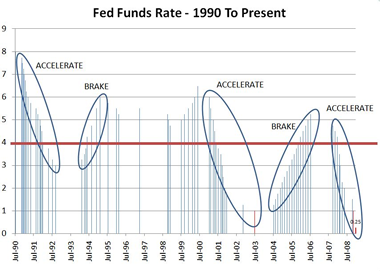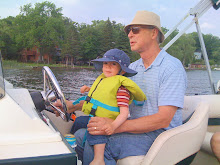Climate Nonscience
SEARCH BLOG: CLIMATE CHANGE
It's always the story. It doesn't matter the facts; it's always the story. That is why it is not surprising to read increasing number of stories from the so-called "mainstream media" that are poking fun and holes in the global warming [aka 'climate change'] contingent... many identified by Marc Morano.
Joe D'Aleo at Icecap and Anthony Watts at Watts Up With That? have been among the leaders of those challenging the data used to "prove" this warming. Their chief argument is that the data has been manipulated to such a degree that it is nearly meaningless... and that the measurement of data has become so poor because of improper weather station siting that many of the stations are reporting temperatures 2 to 5 degrees higher than actual.
Still another argument is that the loss of rural stations and the encroachment of cities on previously rural sites has created widespread Urban Heat Island effects.
This blogger has taken a slightly different approach to arrive at similar conclusions. While it is of utmost importance to examine the minutia of the temperature record and recording process, a macro look reveals much of the conclusions of the detailed examination.
A detailed explanation can be found here, but this is the nutshell version.
This results in a repeating low-high pattern or climate oscillation. If we accept the "official" weather data, it is clear the the current warm period is no warmer than the previous warm period. The last cool period may have been slightly warmer than the beginning cool period.
How would one interpret this look? First, any warming is not due to an increase in hot temperatures, but may be a result of less cold temperatures. This would be consistent with the Urban Heat Island concept that says the release of stored heat from the urban surroundings prevents temperatures from falling as much as they would in a nearby rural environment. An expanding UHI would result in higher minimum temperatures.
If, as Joe and Anthony argue, the recorded temperatures over the past few decades have been overstated because of poor siting, then one might say that the most recent warm period was actually cooler than the previous warm period. That contention would be consistent with the all-time, statewide, maximum temperature records that revealed the 1930s still have many more maximum temperature records than the 1990s.
This is certainly consistent with many "skeptics" including some Russian scientists who have been predicting a significant cooling for several years.
What about that apparent warming? That's the thing about a linear analysis. The mere choice of a starting point will have enormous influence on the trend line. 
Will the minimum temperatures be less cold? Possibly, if you live in a city with a weather stations located near an artificial heat source. At least the weather station will say you are not so cold.
You can read your mainstream media now. What they write may be nonscience, but the media climate toward global warming has certainly changed.








